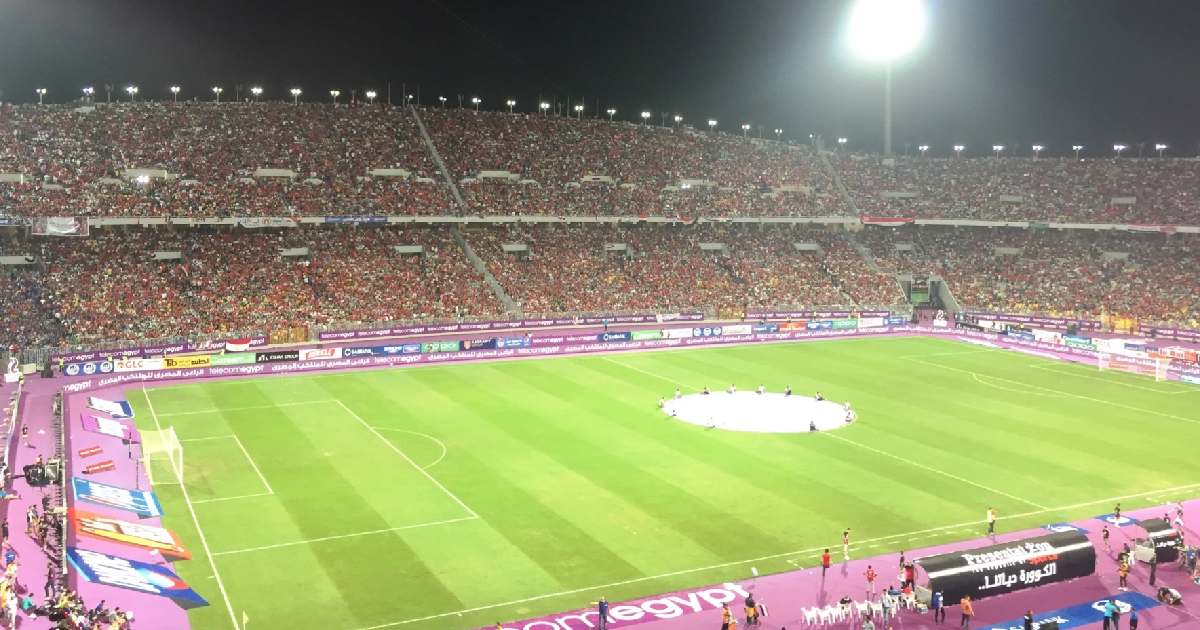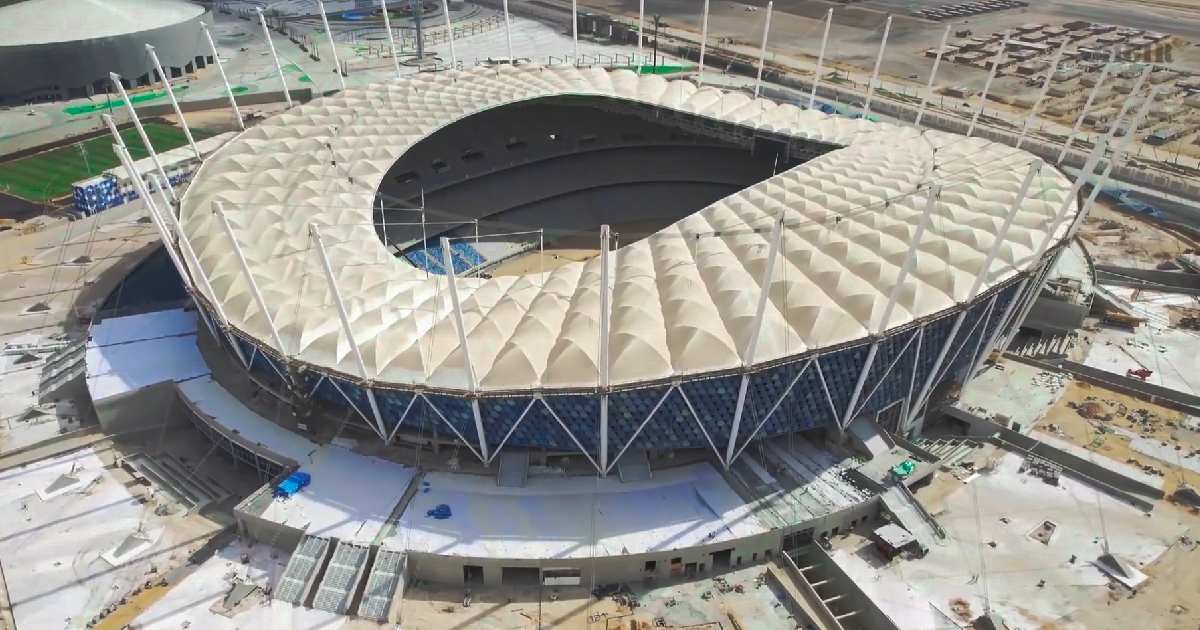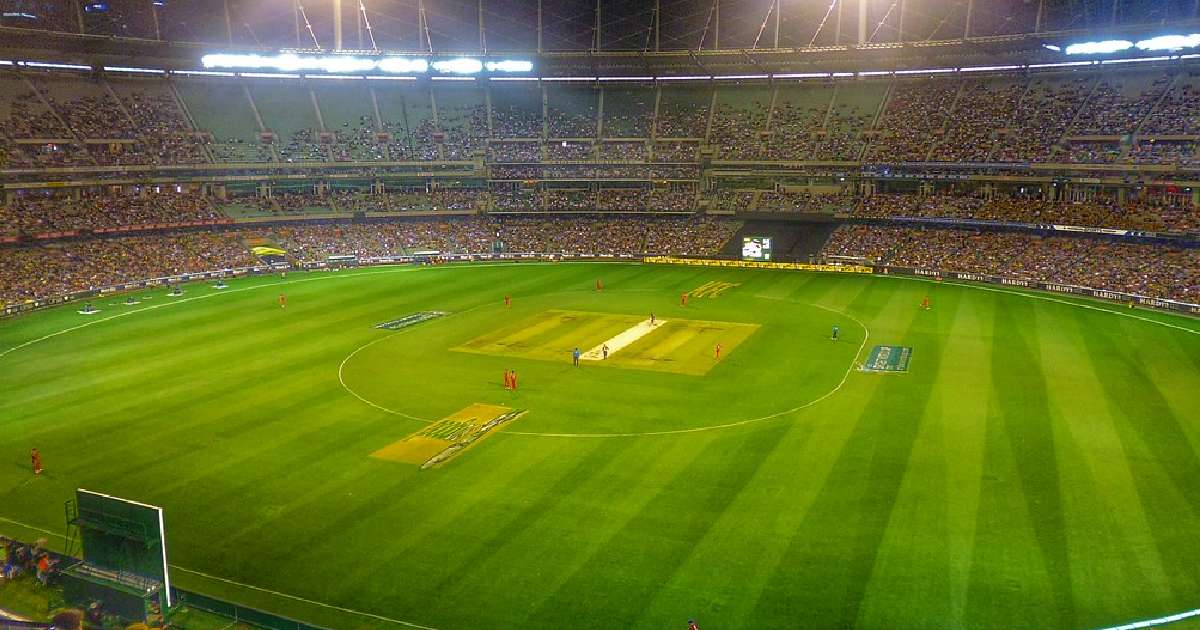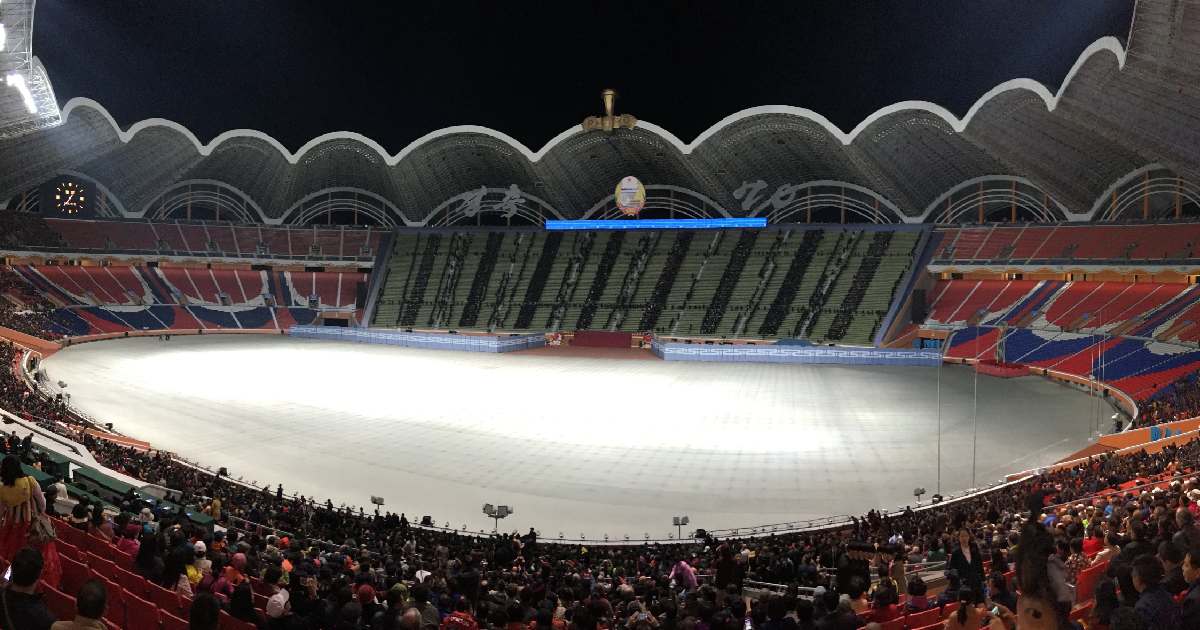
When it comes to the world of soccer, the magnificence of the stadiums can be just as thrilling as the games themselves. From vast arenas packed with passionate fans to architectural marvels that represent cultural icons, the 10 largest soccer stadiums in the world not only host some of the most significant matches but also tell unique stories of their own. In this article, we’ll journey through these colossal venues, from the impressive Borg El Arab Stadium in Egypt to the monumental Rungrado 1st of May Stadium in North Korea, exploring what makes each of them a shrine to soccer.
10. Borg El Arab Stadium, Egypt

Located near Alexandria, the Borg El Arab Stadium stands as a formidable venue with a capacity to hold 86,000 spectators, making it one of the largest football stadiums in the world. Built as a beacon of national pride, the stadium offers a modern design with top-notch facilities aimed at fostering international sports events. Not only does it serve as a home ground for the Egypt national football team, but it has also been a vital part of Egypt’s bid for international football events, providing a robust home advantage in the passionate world of soccer.
9. Bukit Jalil National Stadium, Malaysia

As the largest in Southeast Asia, the Bukit Jalil National Stadium can house 87,411 fans. Originally constructed for the 1998 Commonwealth Games, it has since evolved into a hub for major sports events, particularly football. The stadium’s design facilitates vast crowd management, making it ideal for large-scale events. Its electric atmosphere is a testament to Malaysia’s love for sports, serving not only as a sports venue but also as a cultural gathering place where the national spirit is vividly displayed during matches.
8. Estadio Azteca, Mexico

Home to Club America, one of Mexico’s oldest and most successful football clubs, the Estadio Azteca holds a special place in football history. It accommodates 87,525 spectators and is renowned for hosting two FIFA World Cup finals. The stadium’s design reflects Mexico’s rich cultural heritage, offering breathtaking views and an intimidating atmosphere for the visiting teams, embodying the passionate spirit of Mexican football.
7. Wembley Stadium, England

Wembley Stadium is more than just a sports venue; it’s an icon of English football. Rebuilt in 2007, it now holds 90,000 fans and remains the heart of English football. Known for its distinctive arch, Wembley is a symbol of prestige in the sports world, hosting numerous significant events, including football finals and Olympic matches. This stadium is not just a place for sports; it’s a venue where memories are made, making it a pivotal part of the largest football stadium narrative.
6. New Administrative Capital Stadium, Egypt

Egypt’s commitment to becoming a prominent player in international sports is embodied in the New Administrative Capital Stadium. With a capacity of 93,940, this stadium is yet to be officially opened but promises to be a state-of-the-art venue for the Egypt national team and other major sports events. Its design reflects modernity and functionality, aiming to provide an unmatched experience for fans and athletes alike.
5. FNB Stadium, South Africa

Also known as Soccer City, the FNB Stadium is a landmark in Johannesburg with a capacity of 94,736. Soccer City was the name that referred to FNB Stadium then; however, First National Bank Stadium is its official designation. It played a pivotal role during the 2010 FIFA World Cup, hosting the opening and final matches. The stadium’s design is inspired by African pottery, deeply rooted in the local culture and heritage. It’s not just a sports venue; it’s a symbol of unity and a beacon of hope for South Africa.
4. Rose Bowl, USA

The Rose Bowl Stadium in Pasadena is an iconic venue in American sports culture. With a seating capacity of 95,542, it has hosted numerous significant events, including the 1994 FIFA World Cup final. The Rose Bowl is also a key venue for college football, highlighting its versatility and historical significance in the sporting landscape of the United States.
3. Camp Nou, Spain

Camp Nou is not only one of the largest football stadiums but also a football cathedral in Barcelona. It holds 99,354 spectators and is the beating heart of Barcelona’s football passion. The stadium is a fortress for FC Barcelona and a bucket list destination for football fans worldwide. It is known for its intense atmosphere and the historic moments that have taken place on its hallowed ground.
2. Melbourne Cricket Ground, Australia

Though primarily known for cricket, the Melbourne Cricket Ground is an integral part of the global sports scene with a capacity of 100,024. It hosts various sports, including football, demonstrating its multifunctional nature. The MCG is steeped in history and stands as a testament to Australia’s rich sporting traditions and its deep appreciation for sports. Its expansive stands and the roar of the crowd during a match are truly a spectacle, making it a revered venue in the world of football as well.
1. Rungrado 1st of May Stadium, North Korea

As the biggest football stadium in the world, Rungrado 1st of May Stadium in Pyongyang astonishes with a staggering capacity of 150,000. This colossal structure is not only a sports venue but also a symbol of North Korea’s national pride and power. This largest stadium hosts both football matches and massive artistic performances, showcasing its versatility and the grandeur of North Korean state events.
Conclusion
From the historical depths of Wembley Stadium to the sheer size of the Rungrado 1st of May Stadium, each of these largest soccer stadiums in the world holds a special place in the hearts of sports fans. They are not just structures of steel and concrete but temples where the spirit of soccer comes alive, echoing the cheers of millions. Whether you’re a fan of football stadiums or just a lover of grand architectural feats, visiting these venues is a pilgrimage worth taking for any sports enthusiast.
Frequently Asked Questions (FAQs)
What are the top 10 biggest stadiums in the world?
The top 10 biggest stadiums in the world by seating capacity are:
- Rungrado 1st of May Stadium – Pyongyang, North Korea (150,000 capacity)
- Melbourne Cricket Ground (MCG) – Melbourne, Australia (100,024 capacity)
- Camp Nou – Barcelona, Spain (99,354 capacity)
- Rose Bowl – Pasadena, USA (95,542 capacity)
- FNB Stadium – Johannesburg, South Africa (94,736 capacity)
- New Administrative Capital Stadium – Egypt (93,940 capacity)
- Wembley Stadium – London, England (90,000 capacity)
- Estadio Azteca – Mexico City, Mexico (87,525 capacity)
- Bukit Jalil National Stadium – Kuala Lumpur, Malaysia (87,411 capacity)
- Borg El-Arab Stadium – Alexandria, Egypt (86,000 capacity)
What are the top 5 biggest stadiums in Europe?
The top 5 biggest stadiums in Europe by seating capacity are:
- Camp Nou – Barcelona, Spain (99,354 capacity)
- Wembley Stadium – London, England (90,000 capacity)
- Signal Iduna Park (Westfalenstadion) – Dortmund, Germany (81,365 capacity)
- Santiago Bernabéu Stadium – Madrid, Spain (81,044 capacity)
- San Siro (Giuseppe Meazza) – Milan, Italy (80,018 capacity)
What are the three largest stadiums in the world?
The three largest stadiums in the world by seating capacity are:
- Rungrado 1st of May Stadium – Pyongyang, North Korea (150,000 capacity)
- Melbourne Cricket Ground (MCG) – Melbourne, Australia (100,024 capacity)
- Camp Nou – Barcelona, Spain (99,354 capacity)
What is the biggest soccer stadium in the world?
The biggest soccer stadium in the world in terms of seating capacity is the Rungrado 1st of May Stadium in Pyongyang, North Korea, with a capacity of 150,000.
What is the most beautiful stadium in the world?
The most beautiful stadium in the world is subjective and can vary based on personal preferences, but some commonly mentioned ones include:
- Santiago Bernabéu Stadium in Madrid, Spain, for its iconic design and history.
- Wembley Stadium in London, England, for its modern architecture and iconic arch.
- Allianz Arena in Munich, Germany, for its unique and striking exterior lighting.
- Estadio Azteca in Mexico City, Mexico, for its historical significance and atmosphere.
Soccer City (FNB Stadium) in Johannesburg, South Africa, for its impressive design inspired by African culture.

